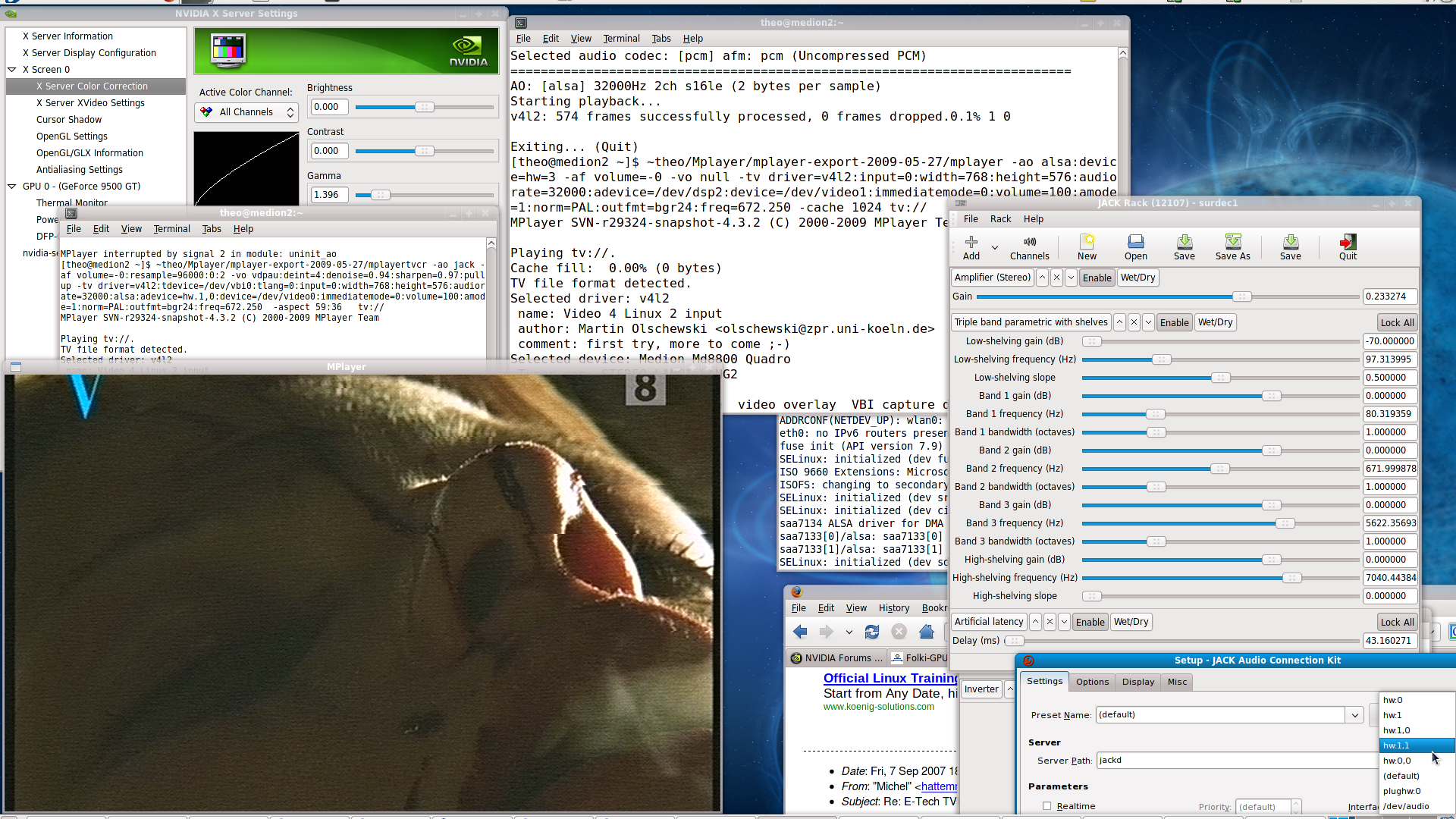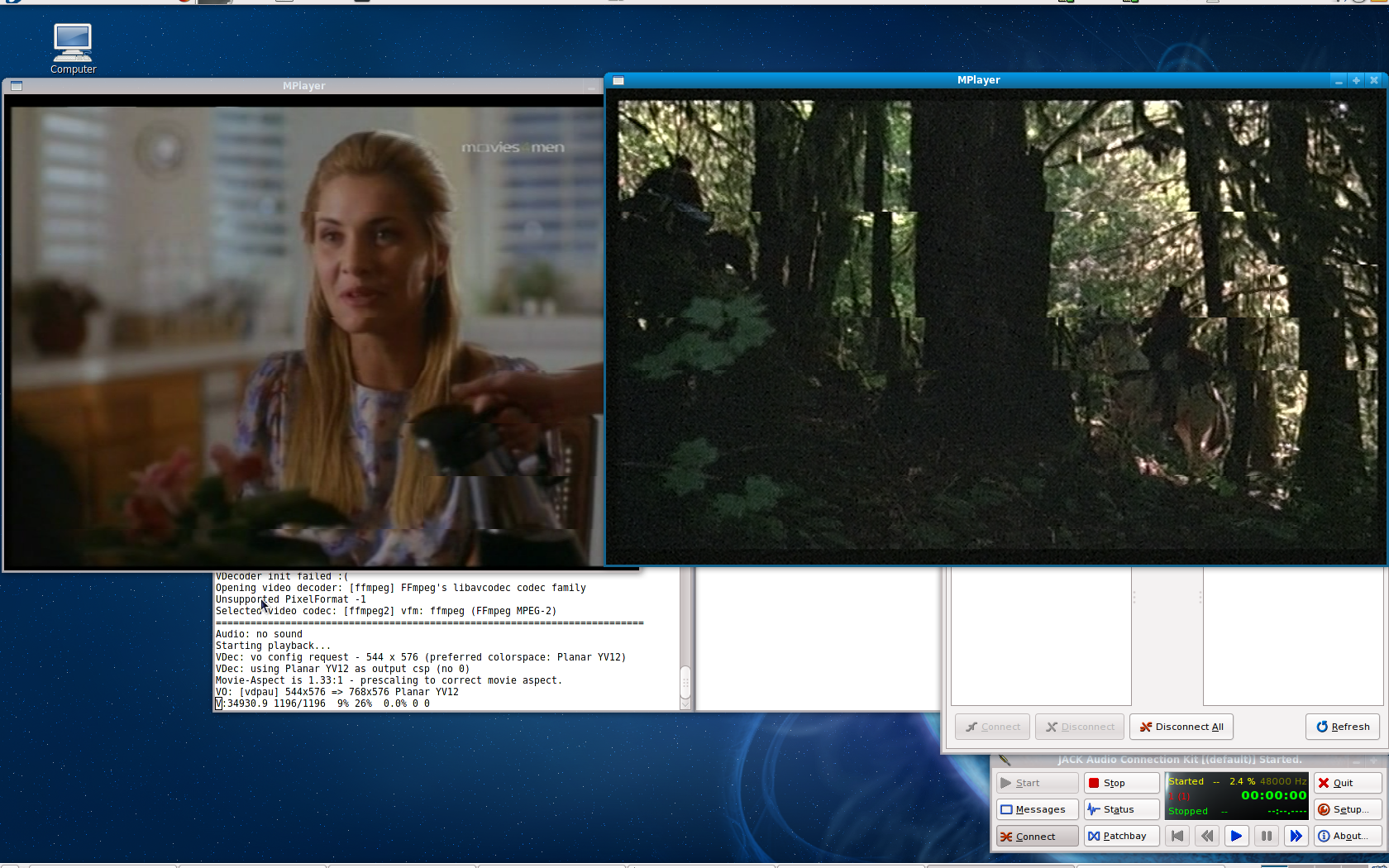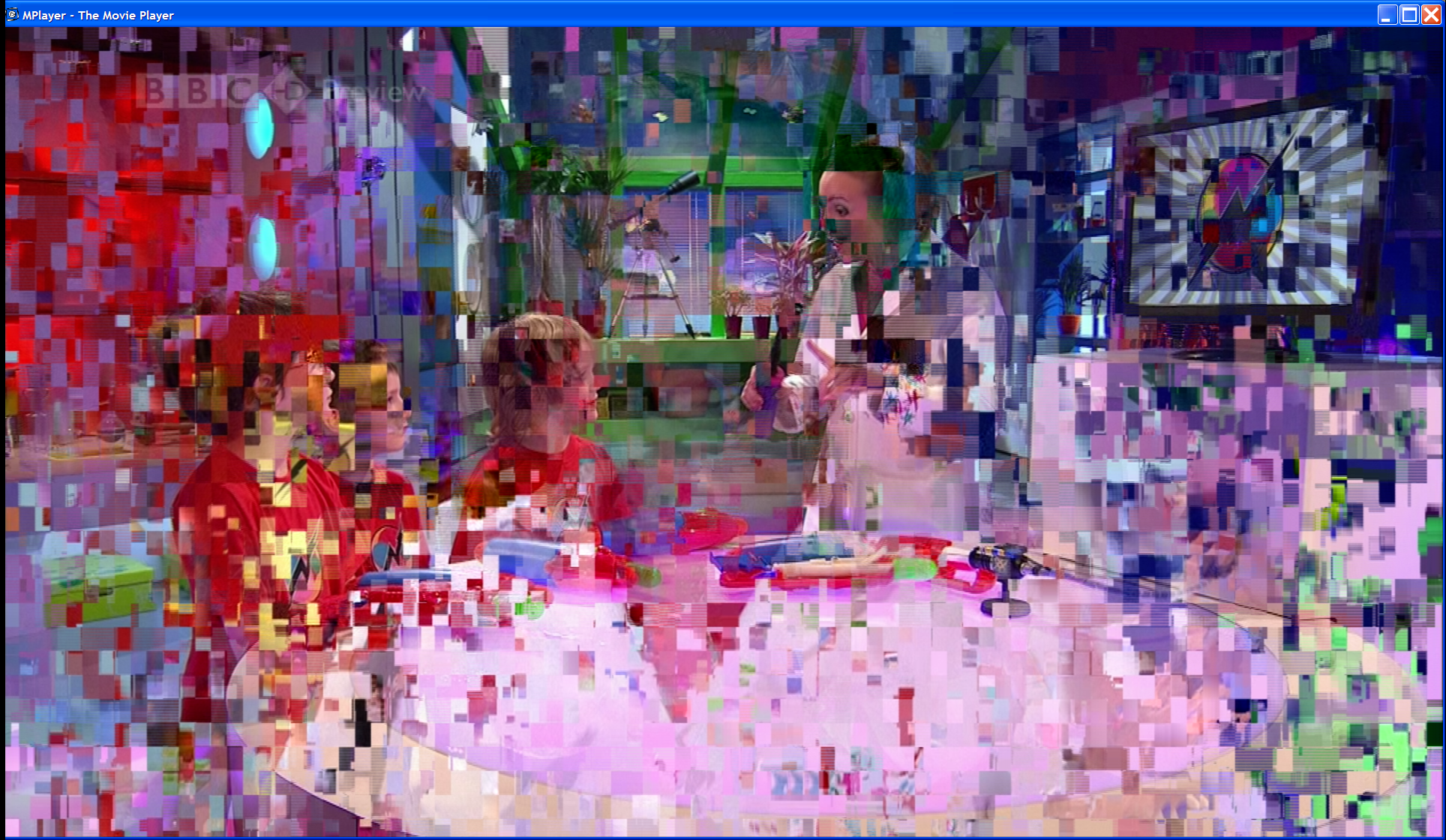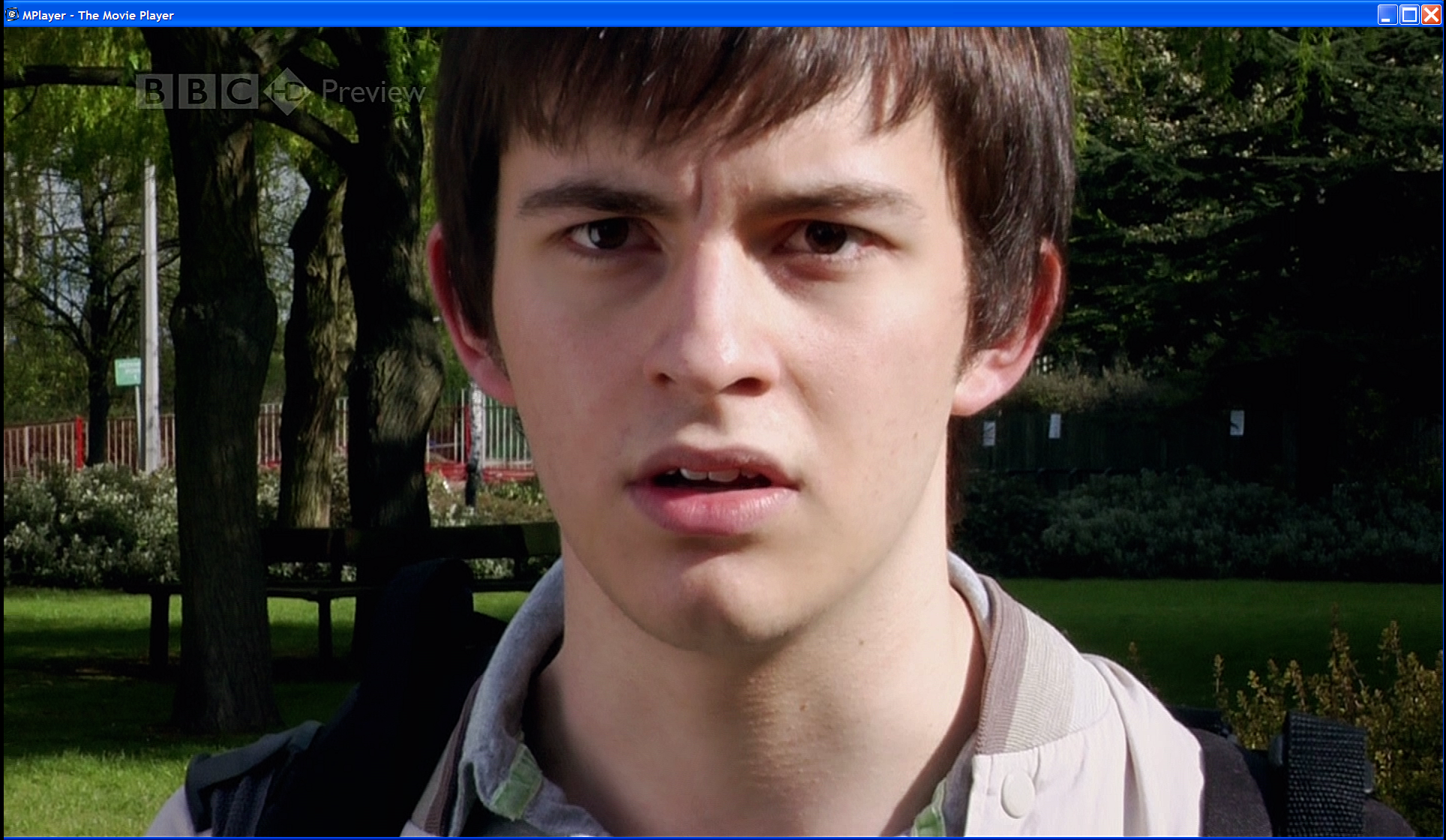Theo Verelst Local Diary Page 85
I've ditched the usual header for the
moment, I think it doesn't help much anyhow.
This page is copyrighted by me, and may be read and transferred by any
means only as a whole and including the references to me. I
guess that's normal, the writer can chose that of course, maybe
Ill make some creative commons stuff one day, of course I have
made Free and Open Source software and even hardware designs available!
This
page is under construction, so check back later, too.
Oct 14, 00:46, 2009
More power TV
An improvement to get pretty good "surround" TV sound like the last
page showed is to use the beamer on the media machine with good and
short cable connection (ground breaker and split amp) , lots of VDPau
filtering of the uncompressed signal, create the surround (rear)
channel using the setup with filter and inverter from the last page at
96kHz sampling rate from the builtin DA converter (Intel precision or
so, not great but not very bad either) and I now used the second
receivers´audio piped through another DA converter at the
reveiver rate of 32kS/s which is of good quality, like so:

I used my hacked vdpau mplayer for 16:9 limiting and the beamer
can magnifi the 10 % extra to make the whole 2 meter 30 wide screen
full, and the main audio system is the main studio sytem, with lots of
watts and very full range.
For remote viewing (over ethernet) I tried to start up and use the
media machine "headless", meaning no screen connected to it, which is
possible, I had to at least make the video and sound devices available
by hand though, because otherwise that happens at login, which now
doesn+t happen. To load all kernel modules and get all running, this
was enough I think:
modprobe
saa7134-alsa
modinfo video4linux2
modprobe videodev
modprobe videobuf_dma_sg
modprobe videobuf_core
modprobe saa7134
chmod 666 /dev/video*
chmod 666 /dev/dsp*
I don´t know about the kernel modules except the first (which
isn´t autoloaded) but the last two commands were needed. To set
the channel for one of the two video tuners, mplayer can be used with
no output:
~theo/Mplayer/mplayer-export-2009-05-27/mplayer
-af volume=-0:resample=4 8000:0:2 -vo null -tv
driver=v4l2:input=0:width=768:height=576:audiorate=32000:adevice=/dev/dsp2:device=/dev/video1:immediatemode=0:volume=100:amode=1:norm=PAL:outfmt=bgr24:freq=248.250
tv://
the freq parameter gets remembered after immedeately quitting it again,
and using the same scripts as shown on the previous page. The audio
device names/numbers may change after restart, so must be checked. When
being away from the machine (with a long ethernet cable in between), it
can be fully stopped at the end of the video session by the remotely
issued command:
shutdown
-P now
All cool.
Reviving the sat computer
Not sounding very reliable, I mucked up the windows partition of a
years old supermaket machine (literally, but it was over a 1000 euro at
the time), a still noticable Pentium D 3GHz beast with nice shiny fron
and lots of connections. I did that when installing a new graphics card
into it after the old ones´ fan had worn out (and it´s
astrays were full of bubblegum) and I wanted a (cheap, 80 euros) CUDA
capable card instead, with additional VDpau and half a Gig of memory.
Somehow I forgot to set disc caching on the main sata disk to off when
I restarted windows XP on the original partition (with sat receiver
software on it) by switching power off... Normally I never do such a
thing, and so it was fine for years, doing a lot of BBC sat viewing,
but unfortunately ntfs is not so cool as the Linux ext3 file systems
with journalling, so the windows partition was messed up, and of course
try-it-anyhow restart didn´t make it all better, so as a
consequence windows only starts in safe mode. I´m sure I could
fix it, but haven´t felt like it. The data is of course available
from the also present and fine working (thus far) Linux Fedora 10/64bit
partitions.
But I had not more sat: the very cheap satbox coming with the
camping-size antenna had died already years ago, and now the sat
windows was unfunctional..
Until some days ago I had the nerve to try out if I could load and
initialize the proper kernel modulas and software to get the dual tuner
terrestial and satellite part of the digitizer card to work on Linux
(I´d never bothered to try). Well first I had no luck, but after
some compiling of dvbutils (I had all kinds of wrong versions) a kernel
update a w_scan install or so and additional (but in Fedora already
present) kernel module invocations and some internet reading about
utils and frequencies, SPIDs and channel list locations (they´re
also on Fedora coming with sat software) for various sats, and a
redirecting of the sat antenna as I recall it used to be aimed (its on
a wooden pole and the plastic antenna even blows off with very hard
wind...) I did get some signal with command line programs to set
frequency and to check for signal presence!
I found that dvb (sat) utils were in my (very recent (self) compile)
mplayer, and so did the effort of finding out two scan programs and
channel list formats, scanned the channels on a sat I thought I
received, and: I got some channels to work! Well, well.
A long scan after redirecting the antenna and rethinking which sat it
would be aimed most to (the 28 degrees ones) more than a few channels
would at least work somewhat or quite, and I found I could even use the
two inputs of the sat card for receiving different channels, but the
second one with a bit of noise.

And then the more fun thing: I found out I can receive HD with it as
well: ITV HD (which isn´t broadcastin more than a text though,
and more interestingly: BBC HD, which has a percent or so bit errors
(if I can believe the test tool) which is a but much, but it does get
received at the full 22megabit per second for the whole channel,
of which then some streams are for the HD, and it plays, too, even live
albeit that the errors make mplayer get out of sync, so its
doesn´t sync good and becomes noise after a little while.
Interesting, but far from perfect.









